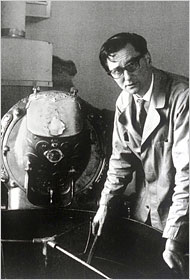
The cuisine of California reflects the diverse culture of California and is influenced largely by Hispanic America roots, alongside Eastern Asian and Oceanian influences and Western European influences, as well as the food trends and traditions of larger American cuisine.

Alice Louise Waters is an American chef, restaurateur, and author. In 1971 she opened Chez Panisse, a Berkeley, California restaurant famous for its role in creating the farm-to-table movement and for pioneering California cuisine.

California cuisine is a food movement that originated in California. The cuisine focuses on dishes that are driven by local and sustainable ingredients with an attention to seasonality and an emphasis on the bounty of the region.

Chez Panisse is a Berkeley, California, restaurant, known as one of the originators of the style of cooking known as California cuisine, and the farm-to-table movement. The restaurant emphasizes ingredients rather than technique and has developed a supply network of direct relationships with local farmers, ranchers and dairies.
Paul Joseph Bertolli is a chef, writer, and artisan food producer in the San Francisco Bay Area, in California.
California-style pizza is a style of single-serving pizza that combines New York and Italian thin crust with toppings from the California cuisine cooking style. Its invention is generally attributed to chef Ed LaDou, and Chez Panisse, in Berkeley, California. Wolfgang Puck, after meeting LaDou, popularized the style of pizza in the rest of the country. It is served in many California Cuisine restaurants. Such restaurant chains as California Pizza Kitchen, Round Table Pizza, Extreme Pizza, and Sammy's Woodfired Pizza are four major pizza franchises associated with California-style pizza.

The Cheese Board Collective in Berkeley, California, comprises two worker-owned and -operated businesses: a cheese shop/bakery commonly referred to as "The Cheese Board", and a pizzeria known as "Cheese Board Pizza". Along with Peet's Coffee, the Cheese Board is known for its role in starting the North Shattuck neighborhood of Berkeley on its way to becoming famous as a culinary destination: the "Gourmet Ghetto". The Cheese Board brought a European focus on cheeses but also emphasized locally produced cheeses, a novel concept in the 1970s. The Cheese Board was closely connected with the restaurant Chez Panisse, helping to supply ingredients for the birth of California cuisine. The bakery brought the French baguette into vogue for Berkeley consumers, and helped spark a revolution in artisan bread.

A chocolate truffle is a type of chocolate confectionery, traditionally made with a chocolate ganache centre coated in chocolate, cocoa powder, coconut, or chopped and toasted nuts, usually in a spherical, conical, or curved shape.

Alfred H. Peet was a Dutch-American entrepreneur and the founder of Peet's Coffee & Tea in Berkeley, California, in 1966. Peet is widely credited with starting the specialty coffee revolution in the US. Among coffee historians, Peet has been called "the Dutchman who taught America how to drink coffee." Peet taught his style of roasting beans to Jerry Baldwin, Zev Siegl and Gordon Bowker, who, with his blessing, took the technique to Seattle and founded Starbucks in 1971. Peet later distanced himself, however, from the Starbucks trio as they experimented with ultra-dark roasts. "Baldwin never learned anything from me," Peet was later quoted as saying.

The Culinary Revolution was a movement during the late 1960s and 1970s, growing out of the Free Speech Movement, when sociopolitical issues began to profoundly affect the way Americans eat. The Culinary Revolution is often credited to Alice Waters, the owner of Chez Panisse restaurant in Berkeley, California
Ed LaDou was an American pizza chef, who is credited with popularizing gourmet California-style pizzas. Ed LaDou was the first pizza chef at Wolfgang Puck's Spago restaurant in L.A. He also developed the first menu for the California Pizza Kitchen.
Alice Medrich is a businesswoman, baker and cookbook author with a particular interest in chocolate. She founded the Cocolat chain of chocolate stores, has authored numerous cookbooks, and is referred to as the First Lady of Chocolate.
Daniel Patterson is an American chef, restaurateur, and food writer, considered a leading proponent of California cuisine.
The history of California bread as a prominent factor in the field of bread baking dates from the days of the California Gold Rush around 1849, encompassing the development of sourdough bread in San Francisco. It includes the rise of artisan bakeries in the 1980s, which strongly influenced what has been called the "Bread Revolution".

The Daily Dose Cafe is an organic cafe and espresso bar in downtown's Arts District in Los Angeles, California, United States, best known for its farm-to-table inspired style of cooking known as California cuisine. Restaurateur, food activist, and chef Sarkis Vartanian opened the cafe in 2012, dedicated to serving organically produced food, artisan coffees, home made baked goods, and nutritionally balanced classic meals. All ingredients come from regional farm, community gardens, local vendors, and farmer's markets to make regional organic produce more accessible as they follow the slow food movement.
Alice Joyce Kahn is an American nurse practitioner and humorist who popularized the slang word "yuppie", describing young urban professionals, and also the term "Gourmet Ghetto", naming an influential retail neighborhood of Berkeley, California. Kahn was a regular contributor to East Bay Express, a columnist at the San Francisco Chronicle, and a syndicated columnist at the Los Angeles Times. She has also written for Mother Jones magazine and the San Jose Mercury News. A self-professed "sit-down comic" noted for her "Jewish-American wit", her understated brand of humor has been compared to that of Erma Bombeck. The Chicago Reader commented on her liberal political viewpoint, writing that she was "Joan Rivers with a social conscience."
Nicholas Cho, also known by his online alias Your Korean Dad, is an American barista, businessman, and internet personality.








